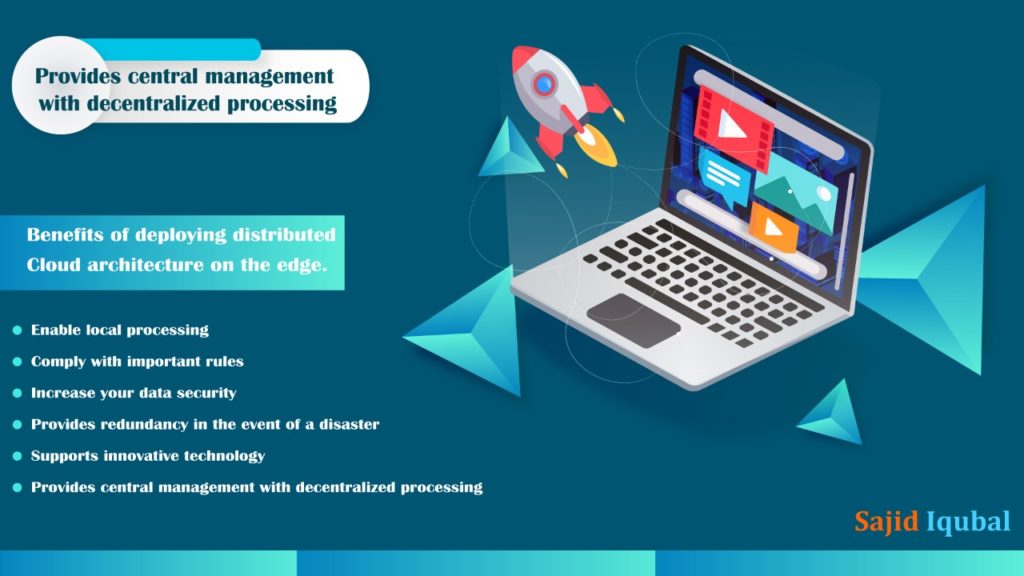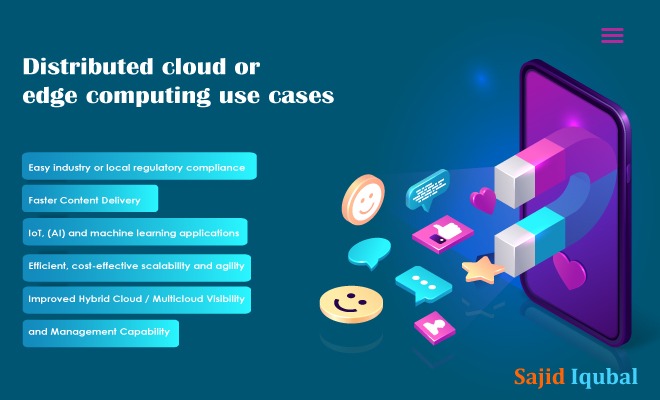A distributed cloud is one of the applications of cloud computing technologies used to interconnect data and applications that are served from different geographic locations. In the context of IT, distributed means shared between multiple systems that can be based in different locations. It helps speed up communication for global services and also enables more sensitive communication for a particular region.
Types of distributed cloud
Public-resource computing: This type of distributed cloud is a consequence of the broader definition of cloud computing because it is more related to distributed computing than cloud computing. It is also considered a subclass of cloud computing.
Volunteer Cloud: This type of computing is known as the intersection of cloud computing and public-resource computing. In this type, a cloud computing infrastructure is built using volunteer resources. However, in this type of infrastructure, many challenges arise due to the instability of resources used to build it and the dynamic environment in which it operates. It is also known as a peer-to-peer cloud or ad-hoc cloud.

Benefits of distributed cloud
- Distributed cloud computing provides iteration and dependability, a geo-replication that encourages reducing costs.
- Distributed cloud provides instant fall-over with the help of remote replicas that can be quickly reset in case of failure.
- Distributed cloud reduces the traffic of the wide area. Using the resources provided by the distributed cloud, wide area communication can be minimized.
- A distributed cloud allows complex problems and data to be broken into small pieces and consists of multiple computers that can be worked in parallel.
Drawbacks/Disadvantages of the distributed cloud:
- Distributed computing systems are difficult to maintain, troubleshoot, or deploy. These complexities are related not only to hardware but also to software that can handle security and communication.
- In distribution computing, deployment costs more than a single system. Processing overhead also increases overall costs due to additional computation and exchange.
- The security of distributed systems is difficult to manage because data access in a centralized computing system requires more security and maintenance. With the network, users must also control the replication data provided in multiple locations.
Why Use Distributed Cloud Architecture On The Edge?
There are many benefits of deploying distributed cloud architecture on the edge. They are as follows:
Enable local processing
An important advantage of this approach is that it allows for local processing, or at least is as close to local as possible. Distributed cloud regions offer the advantage of having smaller cloud service processing units close to your user source across the country or the world.
Comply with important rules
Some regulatory agencies have standards for data that require that the data does not travel outside the user’s country. For that reason, it is important to establish action plans to process data in countries where your customers are. A distributed cloud allows you to do this.
Increase your data security
Your data is at greater risk of a cyber attack in a centralized data processing approach. Think about it. If all your important data is kept in one place, if someone can get through your security, monitoring, firewall, and encryption, then they have access to all your customer data. In that case, a potential cyber threat can shut down your entire application, although it takes a long time to address it.
By managing data in many small clouds, successful hackers who break into one place will only have access to a small percentage of your user’s information and will have more points that allow them to get all your information. This makes you less susceptible to cyberattacks, and if they occur, they are less harmful to your overall business. Additionally, if you have to shut down a cloud nodule for maintenance or prevent a cyber-attack, the rest of your business will be unaffected by the decision to do so.

Provides redundancy in the event of a disaster
This leads us to the concept of redundancy. When you deploy computing systems’ cloud network, you can ensure redundancy.
Supports innovative technology
If you are starting to experiment with artificial intelligence (AI) and IoT in your business, you are not alone. When AI and IoT require low latency to make quick decisions, they are better supported by distributed cloud architectures, as they are by centralized architecture for reasons already mentioned. Better performance makes decision-makers and other employees responsible for monitoring technology to make smarter decisions faster than ever before.
Provides central management with decentralized processing
A huge advantage of distributed cloud infrastructure is that you can still manage your network of cloud data servers with a centralized interface, allowing you to ensure compliance, monitoring, security of customer data.
Distributed cloud or edge computing use cases
Improved Hybrid Cloud / Multicloud Visibility and Management Capability: Distributed cloud can help any organization provide visibility and management from a console, providing visibility and management from a single console.
Efficient, cost-effective scalability and agility: Expanding a dedicated data center, or building new data center locations in different geographical areas is costly and time-consuming. With a distributed cloud, an organization can expand to existing infrastructure or shore locations without physical buildout, and quickly develop and deploy anywhere in the environment using similar equipment and personnel.
Easy industry or local regulatory compliance: Many data privacy regulations specify that a user’s personal information cannot travel outside the user’s country. Distributed cloud infrastructure makes it very easy for an organization to process PIS in each user’s country. Processing data at its source can make compliance with data privacy regulations easier in healthcare, telecommunications, and other industries.
Faster Content Delivery: The Content Delivery Network (CDN) deployed on the distributed cloud can improve the performance of video content – and user experience – by storing and delivering video content from locations close to end-users.
IoT, (AI) and machine learning applications: video surveillance, manufacturing automation, self-driving cars, healthcare applications, smart buildings, and other applications that rely on real-time data analytics that don’t wait for data to move to central cloud data can center and back. Distributed cloud and edge computing provide low latency to the demand for these applications.
Final Words
So, this is the basic idea of distributed cloud; its benefits and applications. As it is clear that distributed cloud computing gives dependability and repetition along with geo-replication as an encouragement in lowering down the cost. Moreover, it also offers immediate fail-overs by having remote replicas which can be reset up on an instant basis in case of failing.